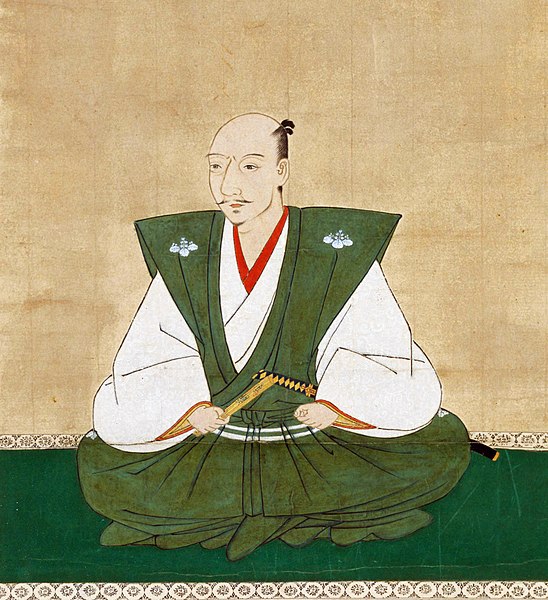Our story begins in feudal Japan when, in 1579, a black slave arrived on its shores as a servant to the Italian Jesuit missionary, Alessandro Valignano. He arrived at a tumultuous time in Japanese history. It was the Warring States period, otherwise known as the Sengoku Jidai.
Probably among the first Africans in Japan, and with his towering height, impressive build, and dark skin, caught the attention of the influential feudal war-lord Oda Nobunaga.

Oda Nobunaga. Public domain, via Wikimedia Commons.
Trials and Loyalty
Intrigued by his appearance, Oda Nobunaga sought to determine the authenticity of his dark skin. Nobunaga, in his curiosity, attempted to wash off his skin to ascertain whether it was natural or a form of coloring. Upon realizing this, Oda Nobunaga took a more genuine interest in him, and he received his Japanese name “Yasuke”.
Yasuke soon became more than just a novelty to Nobunaga, noticing his integrity and strength, remarking that he possessed the strength of 10 men. And in 1581, Nobunaga made Yasuke one of his retainers, where he was awarded a stipend, a house, and a short sword. It is likely that Yasuke was one of Nobunaga’s favourite servants, as he was one of the few servants allowed to eat with him, and he was often seen in role of weapon bearer for Nobunaga.
Yasuke proved his worth on the battlefield, participating in several significant campaigns alongside Nobunaga’s forces. His prowess in combat and unwavering loyalty quickly earned him the respect of both allies and enemies.

Battle of Nagashino 1575. Public domain, via Wikimedia Commons.
Betrayal
Nobunaga, however, was eventually betrayed. In 1582, his general Akechi Mitsuhide attacked him with his forces when he was undefended at the Buddhist temple of Honnō-ji in Kyoto. Yasuke fought alongside Nobunaga’s few bodyguards, but their efforts were in vain, and Nobunaga committed ritual suicide before the enemy could get to him.
Remarkably, Yasuke managed to escape the situation and fled to Nobunaga’s heir, Oda Nobutada to pledge his loyalty. Yasuke fought valiantly alongside Nobutada’s forces, showcasing his skill and unwavering dedication.

Public domain, via Wikimedia Commons
Captivity and Enigmatic Disappearance
However, they were not victorious. Nobutada’s forces were routed and Yasuke was captured. Yasuke was presented to the treacherous Akechi Mitsuhide, who declared Yasuke an animal, but spared his life as he was not Japanese. Instead, Akechi ordered Yasuke to be taken to the Christian church, Nanbanji, in Kyoto.
Following this, historical records regarding Yasuke fade away. His journey and subsequent activities after being taken to the Nanbanji remain shrouded in mystery. No further written information about his life or whereabouts exists, leaving scholars and enthusiasts alike to ponder the enigmatic conclusion of Yasuke’s story.
Samurai or not?
There is not a clear consensus among historians as to whether Yasuke was actually granted the full title and rank of Samurai, or whether he was just a retainer, as there is not clear historical records referring to him as such.
However, he received a household, a sword, a samurai stipend and carried Nobunaga’s weapons which was usually the job of a koshō. And a koshō would always be a Samurai. So there is a lot to indicate that he was samurai, if not formally, then in effect.

